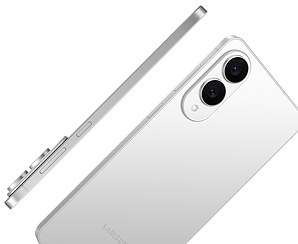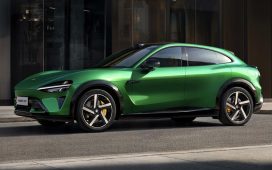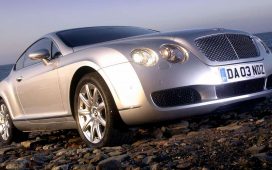Daily Mail journalists select and curate the products that feature on our site. If you make a purchase via links on this page we will earn commission – learn more
After months of anticipation, Samsung finally revealed its latest flagship smartphone to the world this month: the Galaxy S25 Edge.
At just 5.8 millimetres thick, this is Samsung’s thinnest device yet and one of the lightest premium phones on the market.
The Galaxy S25 Edge is available in three colours – Titanium Silver, Titanium Jetblack, and Titanium Icyblue – and is available with either 256GB or 512GB of internal storage.
Ahead of its release on May 30, Samsung sent MailOnline’s Wiliam Hunter the new smartphone to test.
Boasting the same Dynamic AMOLED display and Snapdragon 8 Elite chip from the top-of-the-line Samsung S25 Ultra, the S25 Edge promises high-end performance in a slimmed-down format.
The S25 Edge also features the same 200-megapixel rear camera as the higher-end model, which looked stunning in our testing.
But to pack all of that into an ultra-slim design, Samsung has had to make a few necessary trade-offs, including ditching optical zoom and reducing the battery size.
At £1,099-£1,199, the S25 Edge certainly isn’t cheap, but if getting the slimmest, lightest phone possible is what matters to you, then it might just be worth it.
Samsung Galaxy S25 Edge
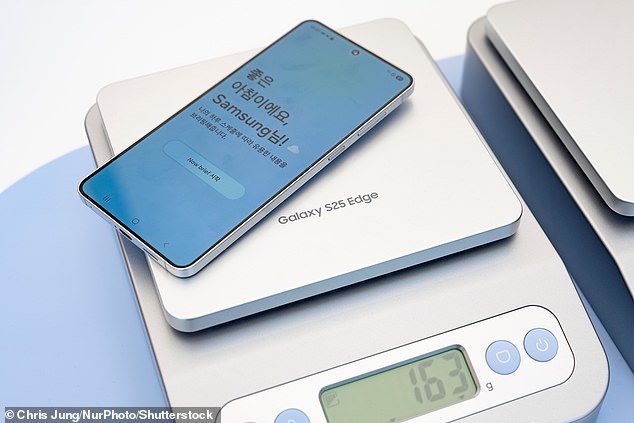
The Galaxy S25 Edge is Samsung’s thinnest and lightest phone to date, but does that justify its hefty price tag?
Our verdict
For someone who wants a versatile phone that they can barely feel in their pocket and doesn’t care about the price, this is the device to go for.
The S25 Edge packs a superbly sleek design into a minuscule form factor that remains surprisingly comfortable to use.
And with a crisp display and plenty of processing power, this device looked sharp and smooth throughout our testing.
But the smaller battery life and pared-back camera features could be an issue for anyone who wants the biggest and best features.
How we test our phones
When we test phones, we make sure to put them through their paces in as many real-world environments as possible.
That means seeing how they work at home, in the office, and out in public for all the situations your device needs to handle.
We evaluate devices based on their hardware, software, and overall appeal – testing everything from camera quality and battery life to how easy they are to type with.
Each phone is tested for at least a week, allowing us to provide an in-depth review to help consumers make an informed decision.
Why trust us
Wiliam Hunter is a science and technology reporter at MailOnline and has been testing and reviewing products for two years. He completed a Master’s degree in Newspaper Journalism at City University London in 2022.
Samsung Galaxy S25 Edge Review
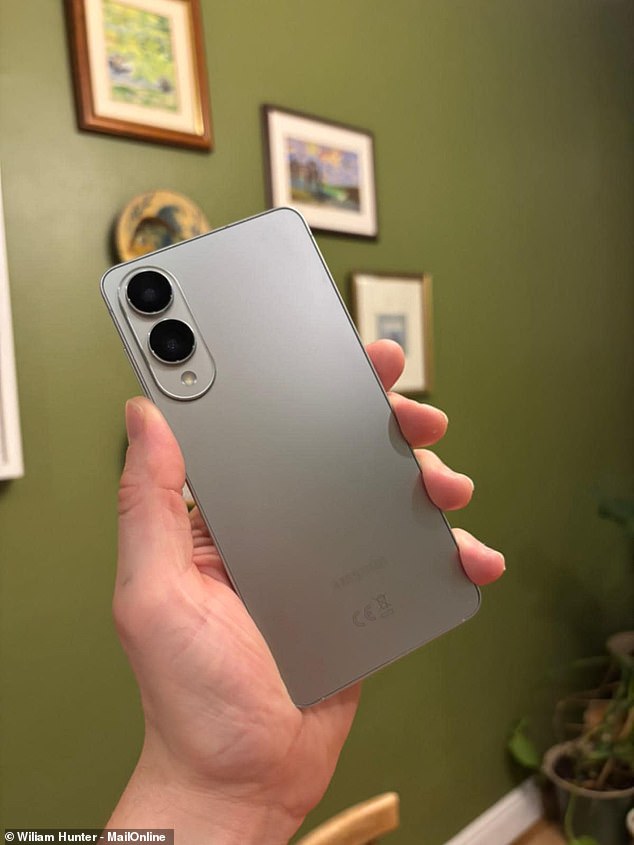
MailOnline’s Wiliam Hunter tried out the Samsung Galaxy S25 Edge to see if the ultra-thin phone still packed in all the power of a high-end smartphone
Design
In terms of looks and design, the Galaxy S25 Edge might just be the best smartphone for your money.
The S25 Edge has the same sleek, flat titanium frame as the S25 Ultra, which looks fantastic in the thinner format.
And, purely in terms of aesthetics, I thought the S25 Edge’s ‘floating island’ camera bump was a huge improvement over the clusters of lenses found on other smartphones.
And while the Galaxy S25 Edge’s dimensions are impressive on paper, it’s hard to get across just how thin and light it really is.
Weighing only 165 grams, the S25 Edge is 32 per cent lighter and 34 per cent thinner than the already-slim iPhone 16 Pro Max.
That might not sound like a lot, but as soon as you pick this phone up, it is clear just how much difference that 30 per cent makes.
With a sizeable 6.7-inch display, the S25 is bigger than either the Google Pixel 9 Pro or iPhone 16 Pro but feels extremely easy to use with one hand.
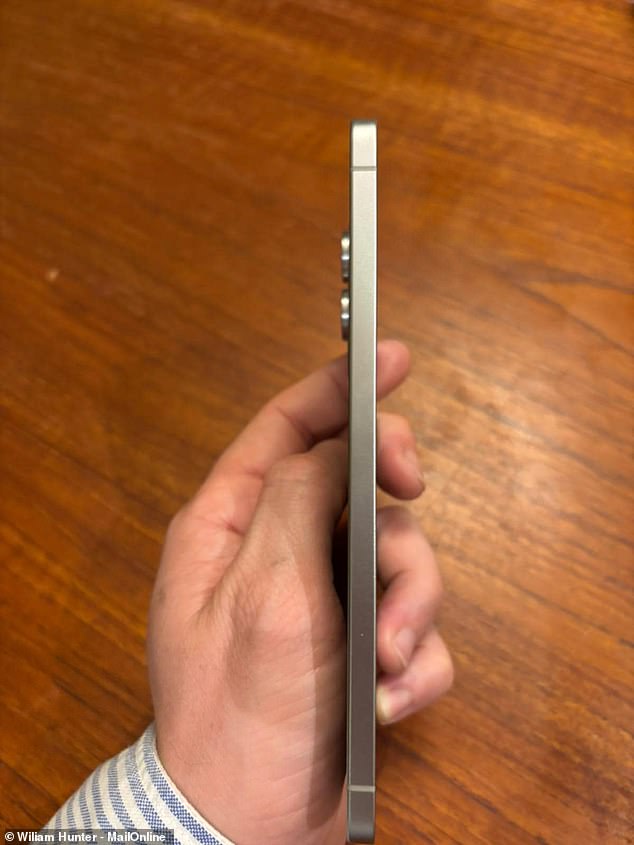
The S25 Edge’s slim design makes a big difference in the hand and looks great with the sleek titanium frame
Initially, as someone who normally slaps a case on a phone and forgets about it, I didn’t think this would be a big deal.
But going back to my old iPhone 15 after a week with the S25 Edge, I genuinely found myself missing how light and easy it was to use.
That might not matter for everyone, but if you do want the slimmest, lightest phone possible, then you don’t need to look much further than this.
Performance
Of course, looks aren’t everything – especially when it comes to a smartphone.
Luckily for Samsung, I was pleasantly surprised by the S25 Edge’s performance across a range of different tasks.
The S25 Edge has the same Qualcomm Snapdragon 8 Elite for Galaxy used across the whole S25 lineup and comes with 12 GB of RAM.
Running a CPU performance test yielded scores which put the S25 Edge easily on par with the larger iPhone 16 Pro and Pro Max in terms of raw computing power.
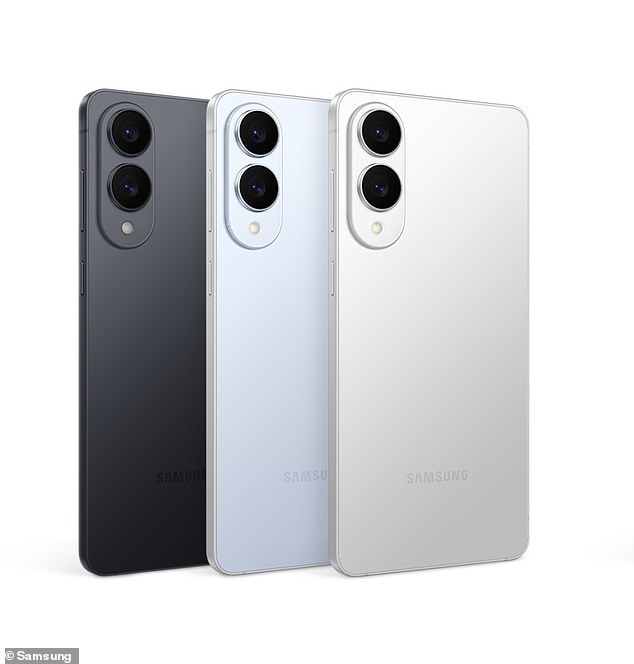
With a sizeable 6.7-inch display, the S25 is bigger than either the Google Pixel 9 Pro or iPhone 16 Pro but feels extremely easy to use with one hand
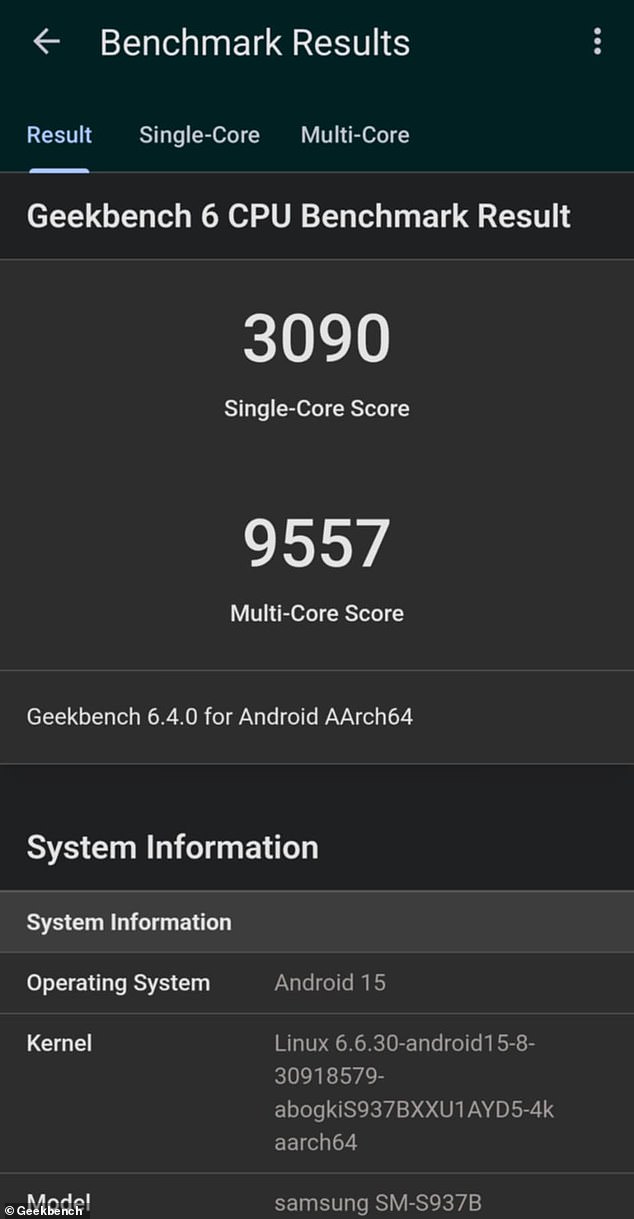
In the Geekbench 6 CPU benchmark, the S25 Edge’s scores put it easily on par with the iPhone 16 Pro and Pro Max in terms of raw computing power
Likewise, putting the S25 Edge through its paces with the graphically intense game Genshin Impact, everything ran smoothly and looked sharp even at the highest graphic settings at 60FPS.
Although the smaller frame means less room for cooling, Samsung says it has added a larger vapour chamber to help the S25 Edge avoid overheating.
During my test, while the back would occasionally become warm, it was nothing unusual and certainly not uncomfortable.
The biggest concern with the S25 Edge being so slim is that Samsung has had to make the battery smaller to fit the frame.
That means you get a 3,900 mAh battery, compared with the 5,000 mAh battery in the S25 Ultra or the 5,100 mAh battery on the Google Pixel 9a.
Compared to Android devices with a similar display and processing power, this means you are going to get an unavoidable reduction in battery life.
But that’s not to say that battery is going to be a problem for most users.
In my tests, the phone only dipped to about 45 per cent after being used from 7am to 11:30pm and charged fully once depleted in around an hour and a half.
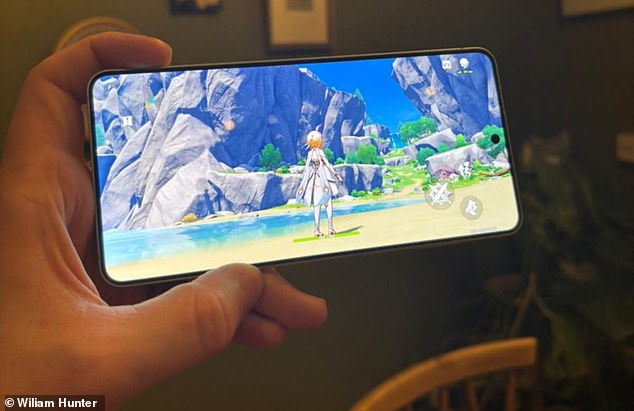
The S25 Edge was able to run the graphically intense game Genshin Impact at 60fps on maximum graphics settings while looking smooth and crisp
Samsung says it uses its processor to ‘optimise’ the battery to get more out of a smaller storage capacity, and, so far, that claim seems to hold up.
Camera
The S25 Edge has the same brilliant 200-megapixel rear camera from the S25 Ultra alongside a versatile 12-megapixel ultrawide camera.
In my tests, the photos taken with the main camera came out looking sharp and vibrant with good colours and nice contrast.
The photos also came out looking good under most lighting conditions, including darker environments.
Likewise, the 12-megapixel front camera is very solid, and Samsung’s built-in photo editing tools include a lot of fun options to play around with.
However, where the S25 Edge falls down is with the lack of optical zoom.
Due to size constraints, the S25 Edge simply can’t fit the dedicated telephoto camera found on models like the iPhone 16 or Samsung Galaxy S25 Ultra.

The Galaxy S25 Edge’s 200-megapixel rear camera looks great in most lighting conditions and has nice bright colours even on grey days. Photo shot on the Galaxy S25 Edge

The camera struggled a bit with environments with lots of dark and light contrast like shady streets, but was impressive overall. Photo shot on the Galaxy S25 Edge
Where the S25 Edge misses out is the lack of an optical zoom. The main camera still has 10x optical zoom (right) which works for most cases but will be a disappointment for die-hard photography enthusiasts
Samsung claims the S25 Edge offers 10 times digital zoom with its main camera, compared to the 100 times zoom possible on the S25 Ultra thanks to its optical zoom.
For phone camera fanatics, you are going to have a much less versatile set of tools than you could get on other flagship smartphones.
Like with most things on the S25 Edge, what it offers is more than good enough for most users.
But if having the best camera possible is what matters most to you in a phone, then that could be a problem.
Display
The S25 Edge’s 6.7-inch display is an AMOLED screen with a refresh rate of 120 Hz.
In terms of numbers, that makes it very similar to all of the leading phones on the market, including the iPhone 16 Pro and Pixel 9 Pro.
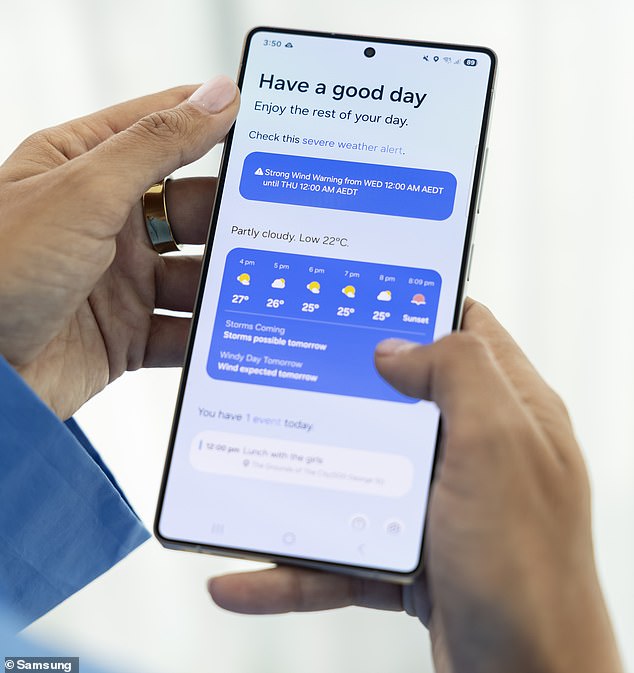
Samsung gives users access to both Google Gemini AI and Samsung’s AI assistant, Bixby, which enables some really useful cross-app tasks such as drafting and sending messages
During testing, the screen was more than bright enough to be crisp and clear in most light levels.
Streaming TV shows or playing games, the colours looked great, and the S25 Edge’s screen had contrast.
While scrolling social media or reading articles, everything was exceptionally crisp and clear, with that high refresh rate providing a smooth experience.
Software
Like Samsung’s other devices, the S25 Edge runs Android 15 alongside Samsung’s One UI 7.
Mostly, this means you get exactly what you would expect from most Android phones with a few bonus features.
Samsung gives users access to both Google Gemini AI and Samsung’s AI assistant, Bixby.
One of the most impressive features is that these two systems allow for complex cross-app tasks.
For example, I asked Gemini to ‘plan a healthy meal list for the next two days and send a shopping list to Lesley’.
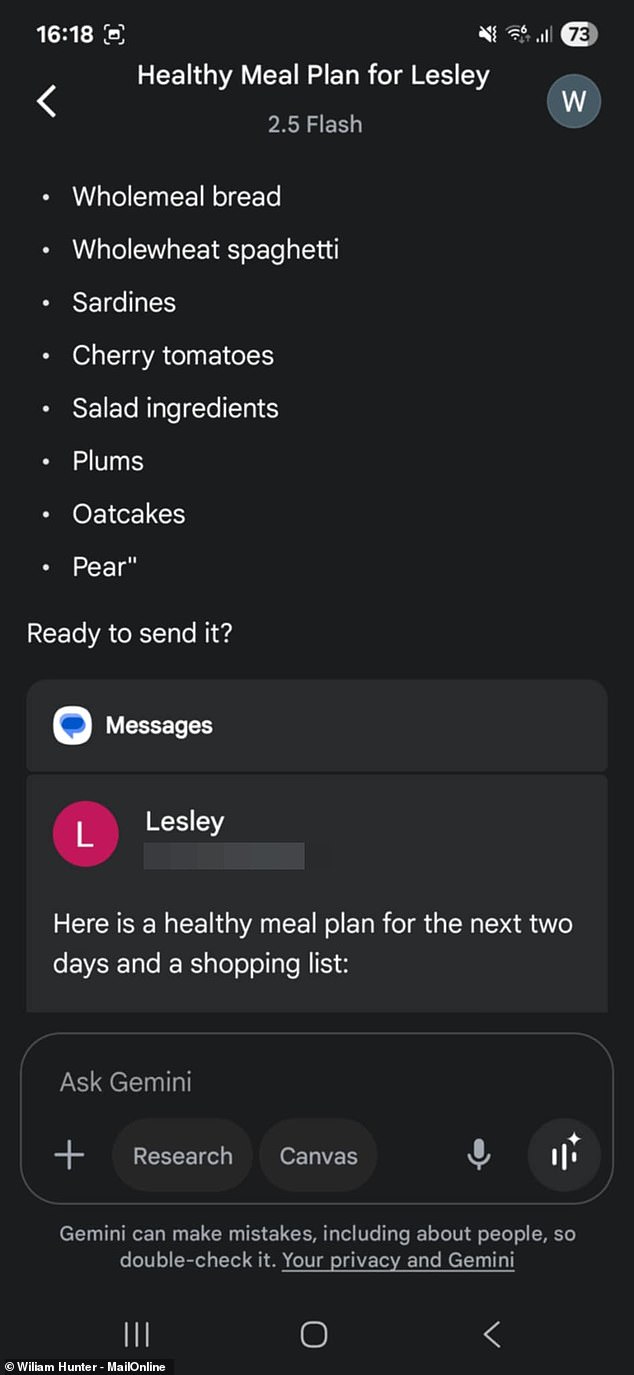
I asked the AI to make a shopping list and send it to someone in my contacts, which it was able to do easily. The message could then be sent by just pressing one button
The AI searched my contact list for the right person and prepared a message with ingredients that I could send with a press of a button.
My only minor gripe with the S25 Edge has to do with its biometric security options.
The S25 Edge has both facial recognition and an ultrasonic under-display fingerprint sensor that works really well for the most secure apps.
However, facial recognition isn’t available for apps with banking-level security, as it is on the iPhone.
That means you’ll need to enter your PIN every time you want to pay for something from the lock screen with Samsung Pay, which makes tasks like paying while wearing gloves a bit of hassle.
Price
Starting at £1,099, the Galaxy S25 Edge is not cheap by any standard, but neither is the most expensive phone out there.
Samsung has tried to position the S25 Edge between the £1,249 Galaxy S25 Ultra and the significantly cheaper £799 Galaxy S25.
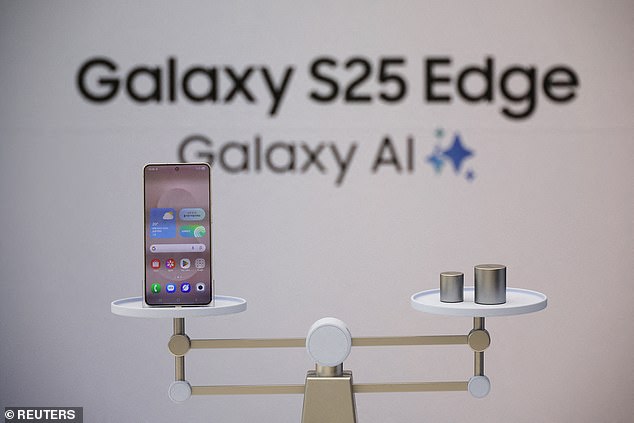
The S25 Edge is definitely at the higher end of prices for a smartphone, which might put some people off considering its pared-down camera and battery options. But, if having the slimmest phone possible is what matters to you, then this price might just be worth it
But for most buyers, that presents a bit of a dilemma.
You could either save £200 and still get most of the same features by dropping down to the standard Galaxy S25.
Or you could spend £150 more to get a better camera, better battery life, and a bigger screen with the S25 Ultra.
In comparison to some smartphones, the S25 Edge is also at the high end of the price scale.
Even with the smallest storage option, the S25 Edge is double the cost of a Google Pixel 9a at just £449 and £200 more than a basic iPhone 16 at £799.
However, the S25 Edge is still £200 cheaper than an iPhone 16 Plus with the same amount of storage and the same price as a Google Pixel 9 Pro.
Given that the S25 Edge holds up against these competitors in most areas and is significantly thinner, that might not be such a bad deal.



